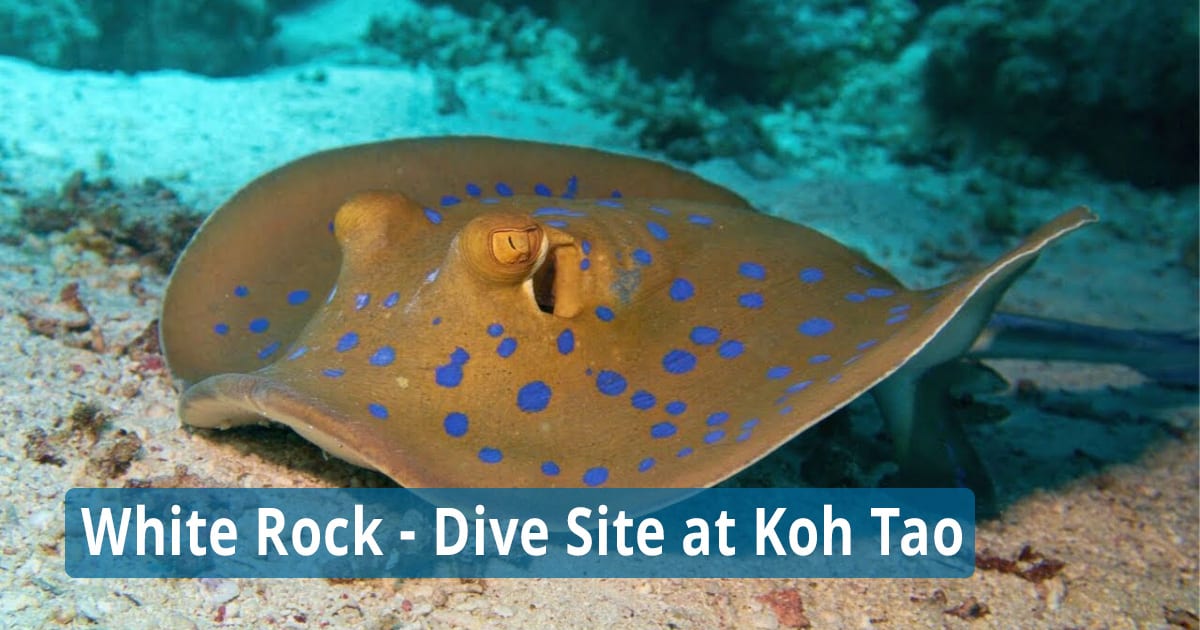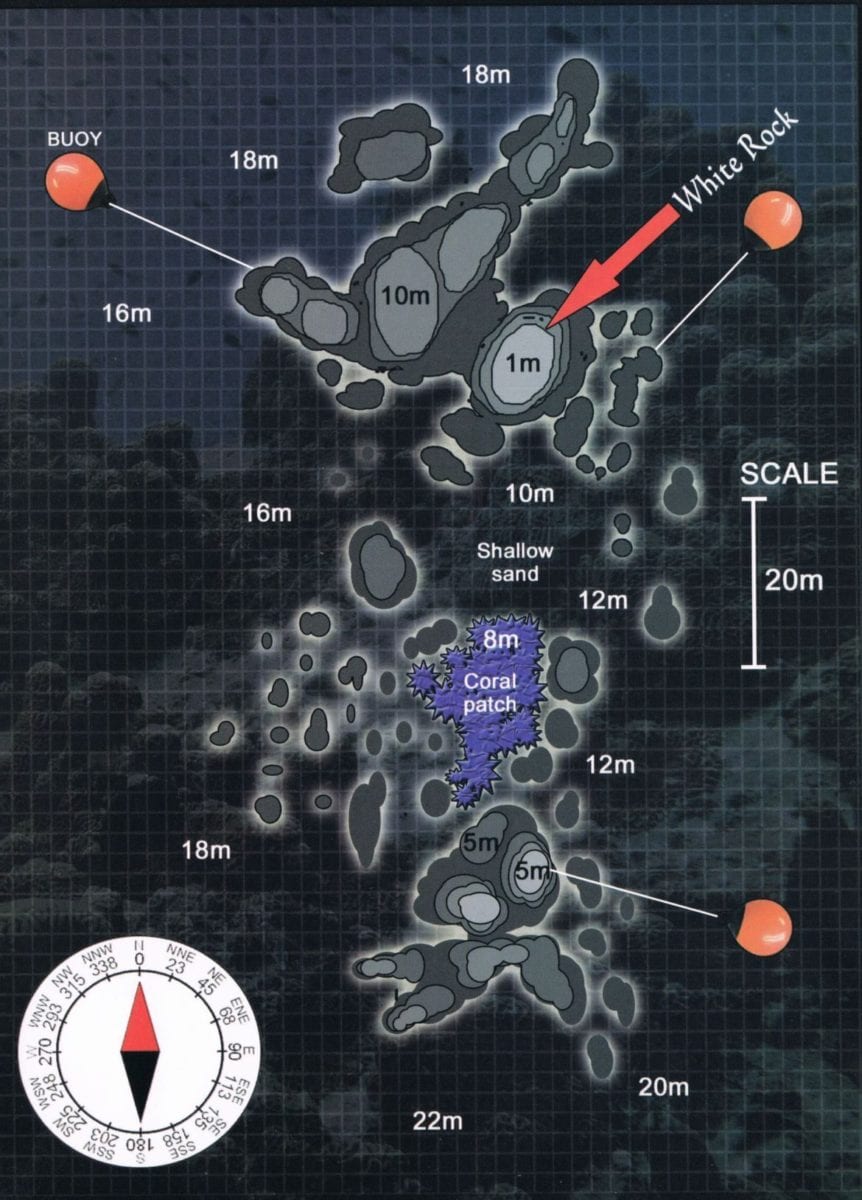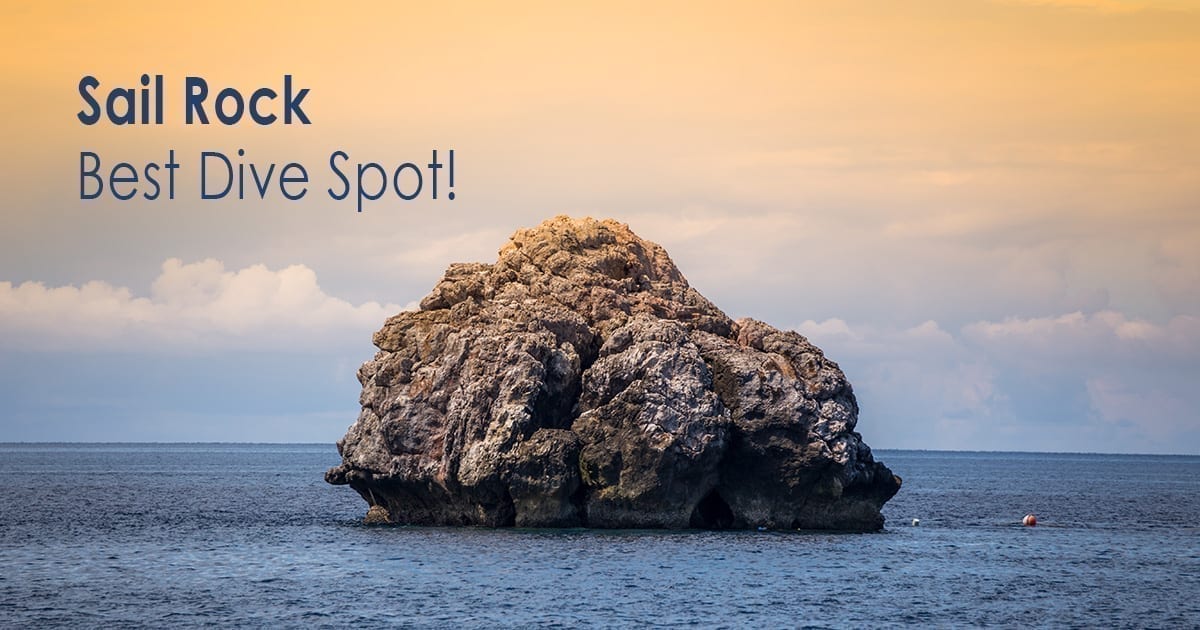To the west of Koh Tao is White Rock, one of the most interesting dive sites in the Samui archipelago. White Rock is very close to Hin Pee Wee and the wreck HTMS Sattakut. White Rock is one of the largest dive sites at Koh Tao and has a large biodiversity. The dive site consists of two large rock formations with a coral garden in between. The actual “White Rock” is located northeast of the dive site.
White Rock – Most popular Dive Site at Koh Tao:
Nestled in the azure embrace of the Gulf of Thailand, White Rock off the coast of Koh Tao is a diver’s sanctuary, where the underwater ballet of marine life unfolds against a backdrop of vibrant coral reefs. This dive site, a jewel in the crown of Koh Tao’s diving realm, invites adventurers to plunge into an aquatic wonderland that is both exhilarating and serene.
As you descend, the water clarifies, revealing a bustling metropolis of tropical fish, from the flamboyant butterflyfish to the elusive moray eels, weaving through the intricate tapestry of coral. White Rock is famed for its two large pinnacles, which serve as the epicenter of this underwater ecosystem. The site caters to both novice and experienced divers, offering shallow areas for beginners to find their sea legs and deeper zones that challenge the seasoned explorer.
Night dives here are particularly magical, transforming the seascape into a phosphorescent dreamscape, where nocturnal creatures and fluorescent corals emerge from the shadows. It’s a place where every dive feels like a personal discovery, a secret shared between the diver and the deep.
For those drawn to the call of the ocean, White Rock in Koh Tao is not just a dive site; it’s a passage to a world less traveled, where the beauty of the underwater realm reminds us of the wonders our planet holds, beckoning travelers to keep exploring, one breath at a time.
What Can Be Seen Here:
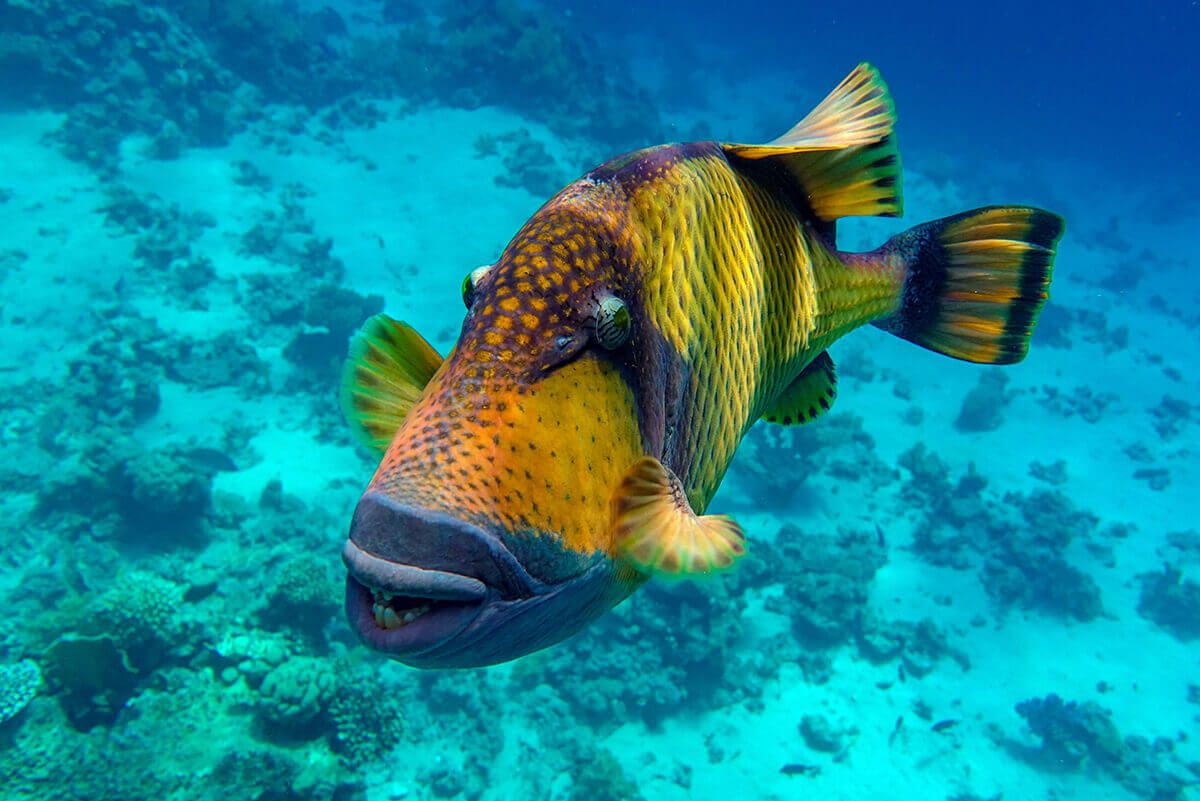
Titan triggerfish (Balistoides viridescens): Dive into the vibrant underwater realm of the Titan triggerfish, a marine marvel that commands the tropical reefs of the Indo-Pacific. This formidable fish, with its strikingly patterned, robust body, can grow up to 75 cm in length, making it the largest of its kind in the triggerfish family. Its vivid hues and intricate designs are not just a feast for the eyes but also a warning to respect its territory, especially during nesting season. The Titan triggerfish is a master of its domain, using strong, powerful jaws to feast on sea urchins, crustaceans, and hard-shelled mollusks, playing a crucial role in maintaining the health of the coral reefs.
Adventurous souls seeking to witness this underwater titan in its natural habitat should approach with caution and respect, maintaining a safe distance to avoid its protective wrath. Observing the Titan triggerfish in action offers a unique glimpse into the complexity and vibrancy of marine life, inspiring awe and a deeper appreciation for the ocean’s wonders.
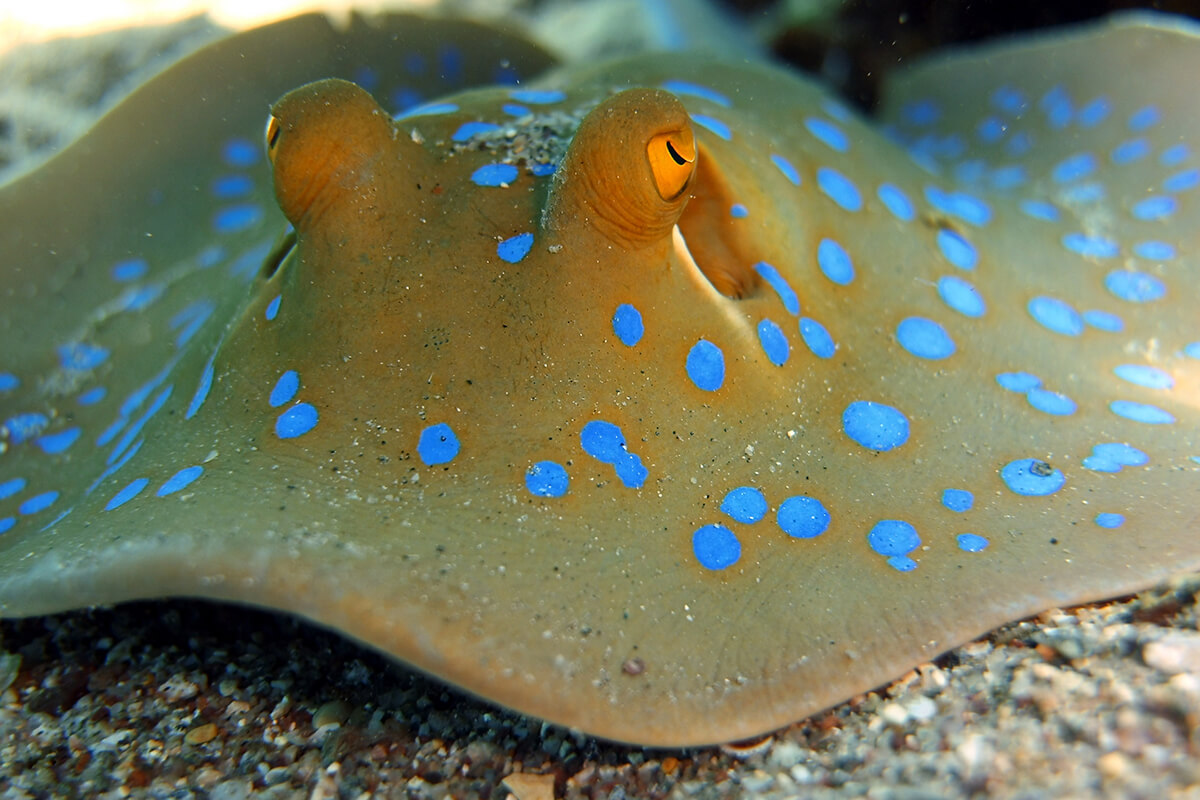
Blue-spotted stingray (Kuhl’s maskray (Neotrygon kuhlii)): The Blue Spotted Ray glides elegantly across the seabed, a spectacle of nature’s artistry. Adorned with vibrant blue spots on a backdrop of yellowish-green, this marine creature embodies the ocean’s mystery. Found in the shallow coral reefs and sandy flats of the Indo-Pacific, it’s a sight that beckons divers and snorkelers. Despite their allure, these rays, with their sleek tails and venomous barbs, remind us of nature’s delicate balance between beauty and survival. Observing them in their natural habitat offers a glimpse into the aquatic ballet, a dance of grace and agility, inviting travelers to explore the depths of our planet’s waters.
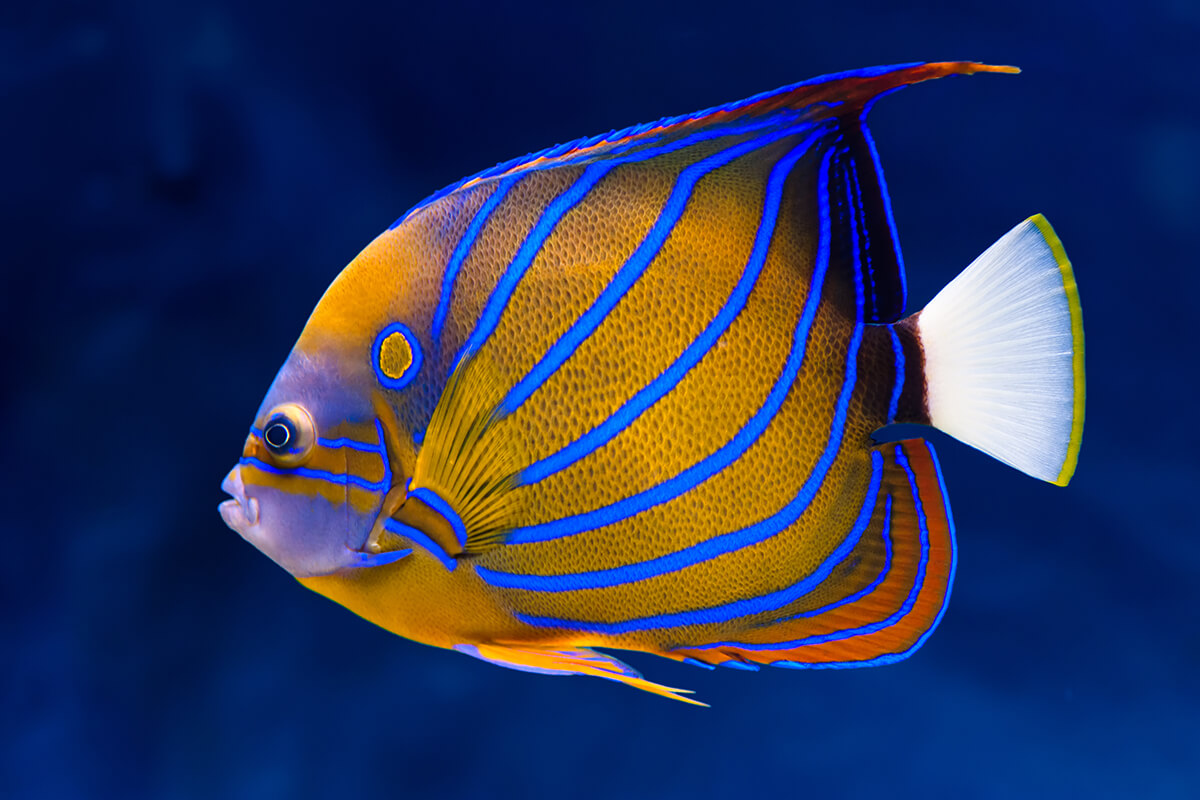
Blue Ring Angelfish (Pomacanthus annularis): At White Rock dive site, you might be lucky enough to encounter the Blue Ring Angelfish, a jewel of the ocean’s depths. This enchanting species, with its vibrant palette of blues and yellows, commands the attention of divers and marine enthusiasts alike. Native to the Indo-Pacific’s coral-rich lagoons and reef slopes, the Blue Ring Angelfish, or Pomacanthus annularis, thrives in warm, clear waters, often seen fluttering around depths of up to 25 meters.
Adults boast a striking blue body adorned with bold, yellow rings, creating a dazzling display against the aquatic backdrop. Juveniles, however, play a different visual tune with their dark blue bodies and electric blue and white rings, a stunning contrast that serves as a natural masterpiece. Observing these creatures in their natural habitat offers a glimpse into the complex tapestry of marine life, highlighting the importance of preserving our oceans’ biodiversity. The Blue Ring Angelfish, with its ethereal beauty, not only captivates the hearts of those who witness it but also serves as a vivid reminder of the wonders hidden beneath the waves.
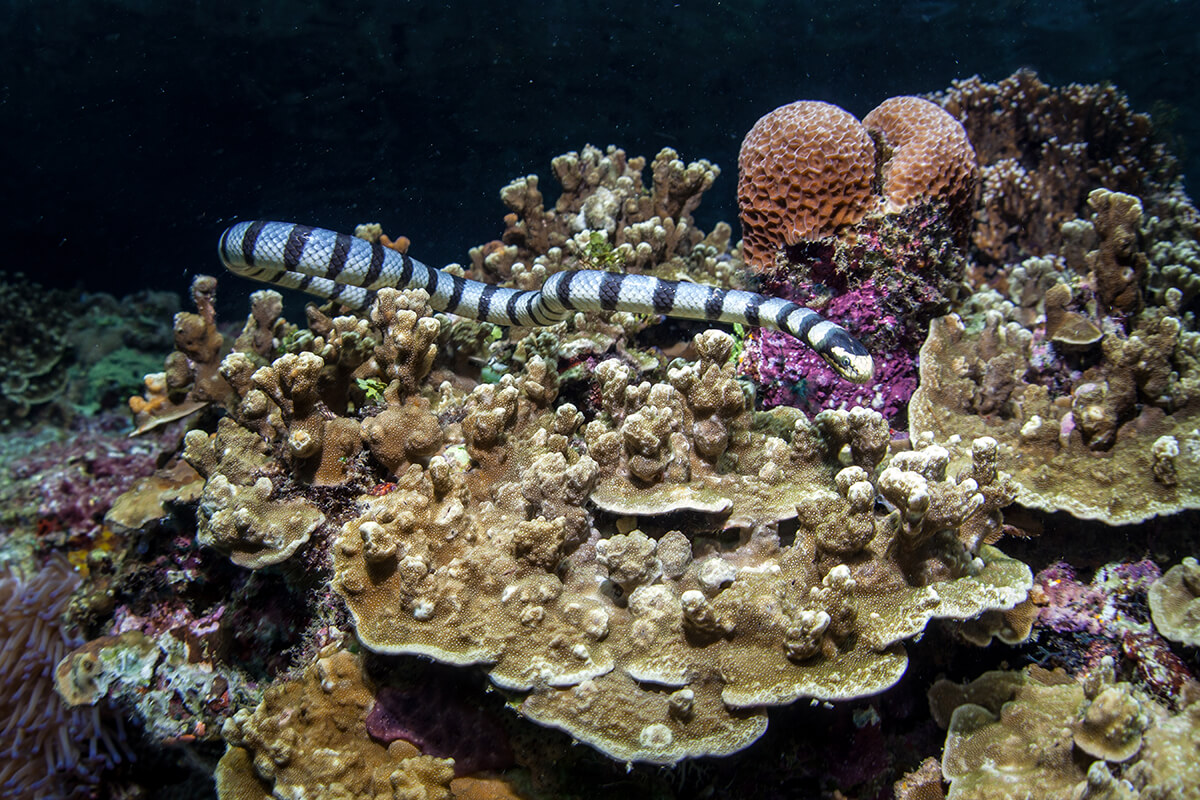
Banded sea snake (Yellow-lipped sea krait (Laticauda colubrina)): The banded sea snake, a marvel of marine life, weaves through coral gardens with an elegance that belies its potent venom. This slender serpent, adorned with a distinctive pattern of bands, thrives in the warm coastal waters of the Pacific and Indian Oceans. Despite its fearsome reputation, it exhibits a gentle demeanor towards divers, offering a unique spectacle of nature’s paradoxes. The banded sea snake surfaces every few hours to breathe, a reminder of its terrestrial ancestry, inviting onlookers into a world where land and sea intertwine. Observing this creature in its natural habitat is a vivid chapter in the grand narrative of our planet’s biodiversity, a testament to the wonders that lie hidden beneath the ocean’s surface.
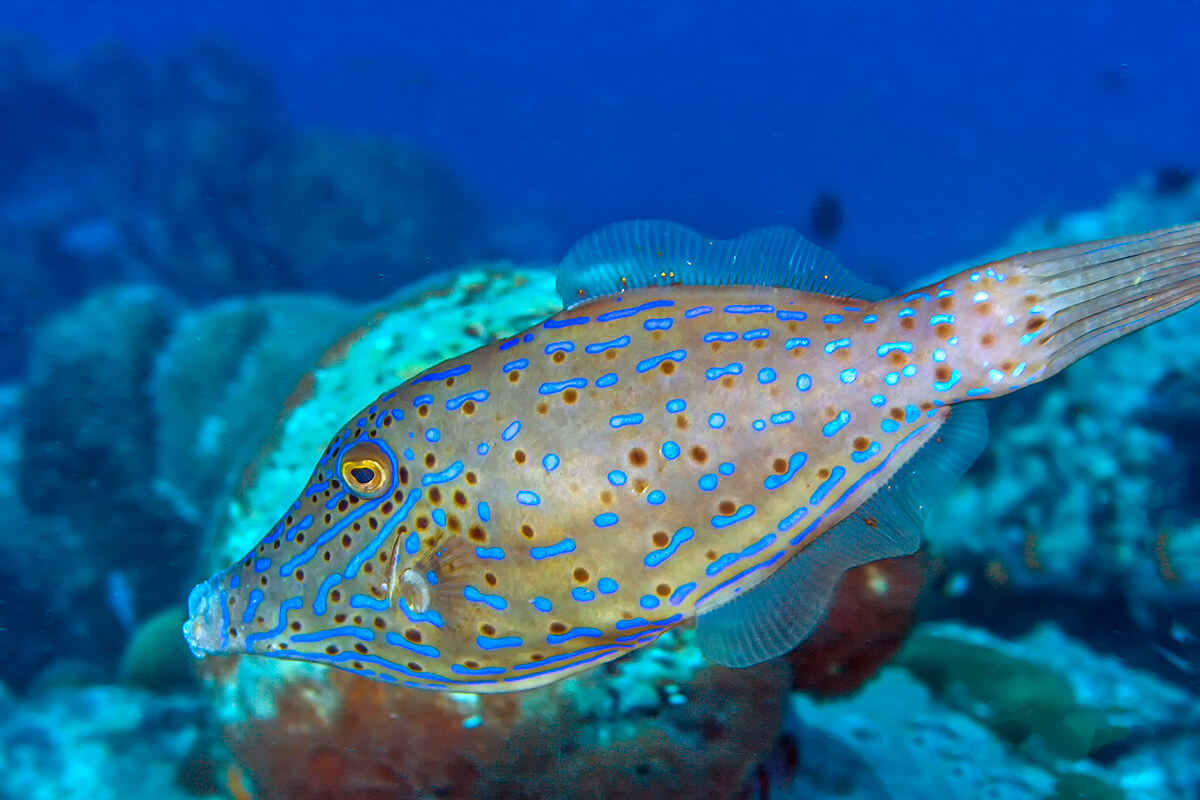
Cribbled filefish (Aluterus scriptus): If You are lucky, you can encounter the enigmatic Scribbled Filefish, a marine marvel adorned with a kaleidoscope of intricate, maze-like patterns that seem to tell tales of the ocean’s mysteries. This elusive creature, cloaked in hues of green and yellow, meanders through coral reefs and seagrass beds, its slender body almost vanishing against the vibrant tapestry of the sea. Divers and snorkelers in the warm, clear waters of the Indo-Pacific are occasionally graced by its presence, a testament to nature’s artistry. Observing the Scribbled Filefish is not just a sighting; it’s an immersion into the aquatic world’s nuanced beauty, a reminder of the delicate balance sustaining our planet’s blue heart.
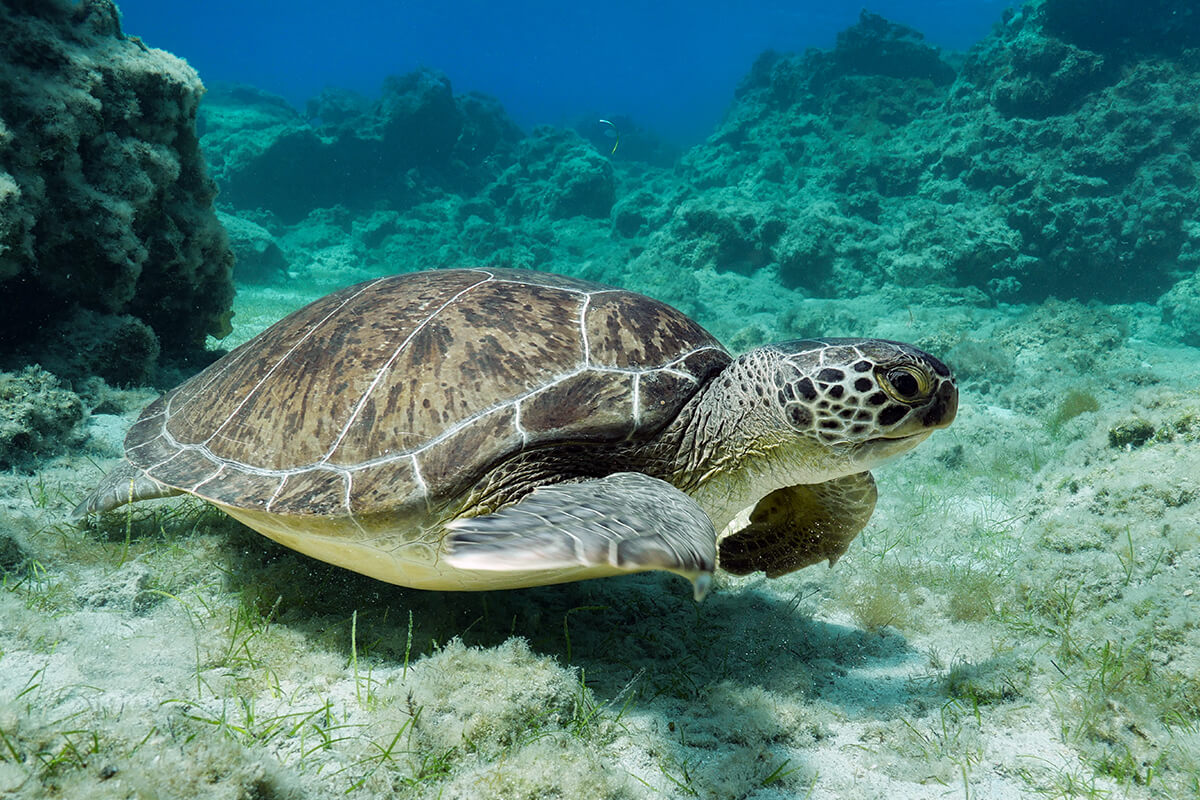
Green sea turtles (Chelonia mydas): Dive into the azure embrace of Koh Tao’s White Rock, where the majestic green sea turtles glide through their underwater realm with serene grace. This dive site, a jewel in Thailand’s crown, offers an intimate glimpse into the vibrant life beneath the waves. Here, amidst the kaleidoscopic coral gardens, the green sea turtle moves with an elegance that belies its size, its ancient eyes witnessing the endless cycle of marine life. Observing these gentle giants in their natural habitat, one feels a profound connection to the ocean’s mysteries. White Rock doesn’t just offer a dive; it offers an encounter with the sublime, a moment where time stands still, and the only sound is your heartbeat mingling with the sea’s timeless rhythm.
Rating / Depth:
- Easy – Intermediate
- 5m – 22m
Did You booked Your day for diving already? If not – do it here now!




